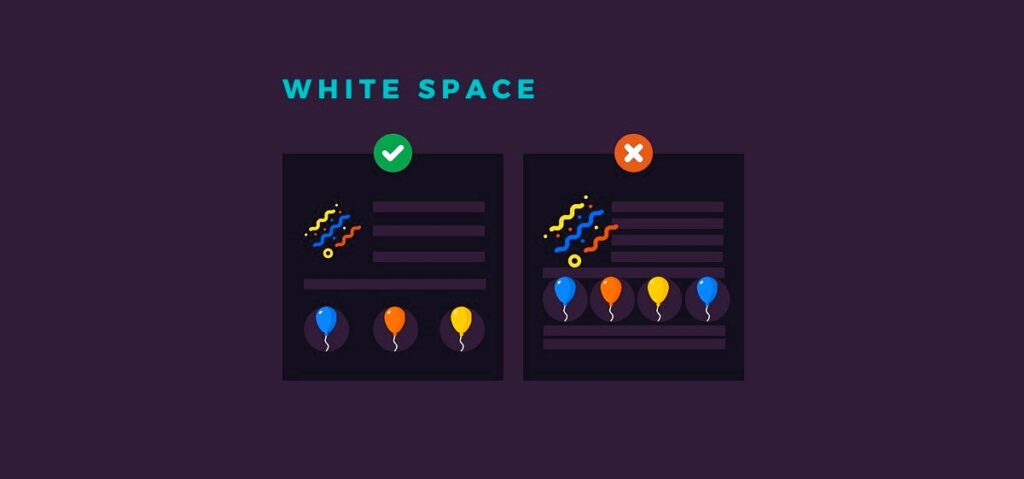In the ever-evolving landscape of web design, one element stands out as both powerful and subtle – white space. Also known as negative space, white space refers to the empty or unmarked areas in a design, and its strategic use holds immense significance in creating visually appealing and effective websites. In this article, we’ll explore the importance of white space in web design and how it contributes to overall user experience.
1. Defining White Space
White space is not merely an absence of content; it is a deliberate design choice that enhances the overall aesthetics and functionality of a website. It can be categorized into two types: macro white space, which refers to the space between major design elements, and micro white space, which involves the spacing between smaller elements like text and images.
2. Visual Clarity and Focus
One of the primary functions of white space in web design is to improve visual clarity and focus. When used strategically, white space guides the user’s attention to key elements on a page, making it easier to navigate and absorb information. Cluttered and crowded layouts can overwhelm visitors, whereas well-utilized white space creates a sense of order and hierarchy.
3. Readability and Comprehension
White space plays a pivotal role in enhancing readability and comprehension. Ample spacing around text blocks and paragraphs prevents visual fatigue, making it easier for users to read and absorb information. Additionally, white space allows for effective separation between different content elements, reducing the likelihood of information overload.
4. Brand Perception and Elegance
The use of white space in web design contributes to the overall perception of a brand. Clean and well-organized layouts exude a sense of professionalism and elegance, instilling trust in users. Brands that prioritize white space in their design convey a commitment to clarity and user-centricity, positively influencing the audience’s perception.
5. Mobile Responsiveness
In the era of mobile devices, where users access websites on screens of varying sizes, the importance of white space becomes even more pronounced. Properly implemented white space ensures that a website remains visually appealing and functional across different devices. It allows for a seamless and enjoyable user experience, regardless of the screen dimensions.
6. Call to Action Emphasis

White space is instrumental in drawing attention to crucial calls to action (CTAs). By surrounding buttons and links with ample space, designers can ensure that users easily identify and interact with these key elements. This, in turn, improves the conversion rate and achieves the desired user actions. Optimizing your website for search engines, read more in the article about SEO and design.
7. Psychological Impact
Beyond its visual benefits, white space has a psychological impact on users. It can evoke a sense of luxury, tranquility, and sophistication. The strategic use of white space can create a positive emotional response, influencing how users perceive and engage with a website.
8. Accessibility and Inclusivity
Considering accessibility in web design is paramount, and white space contributes to a more inclusive user experience. Proper spacing improves navigation for users with mobility challenges and benefits individuals with visual impairments by reducing visual clutter.
In conclusion, white space is not just empty space; it is a crucial design element that influences the overall success of a website. By prioritizing visual clarity, readability, and user focus, designers can harness the power of white space to create websites that are not only aesthetically pleasing but also functional and user-friendly.
For more insights into web design standards and practices, you can visit the Wikipedia page on Web Design.


